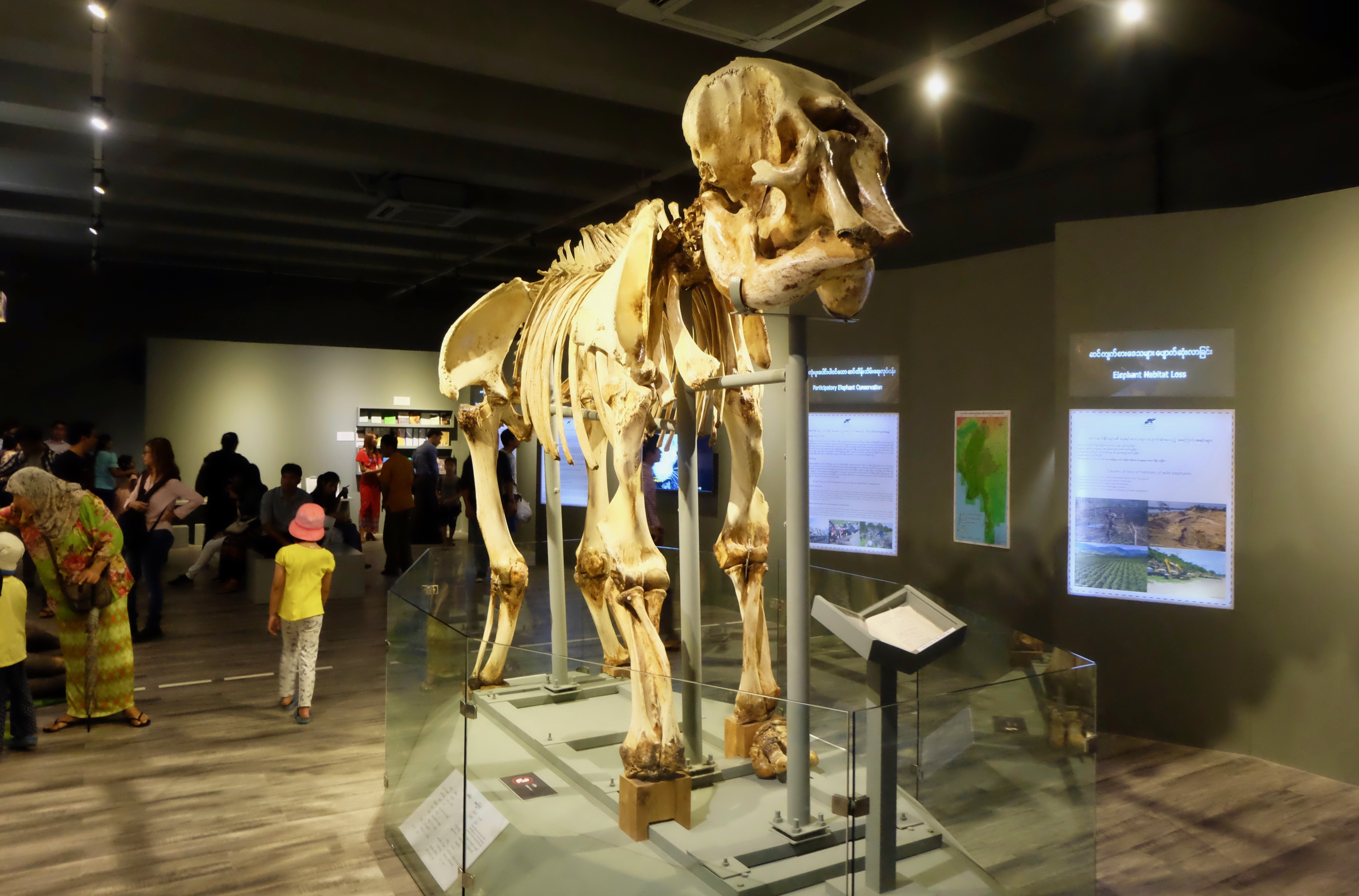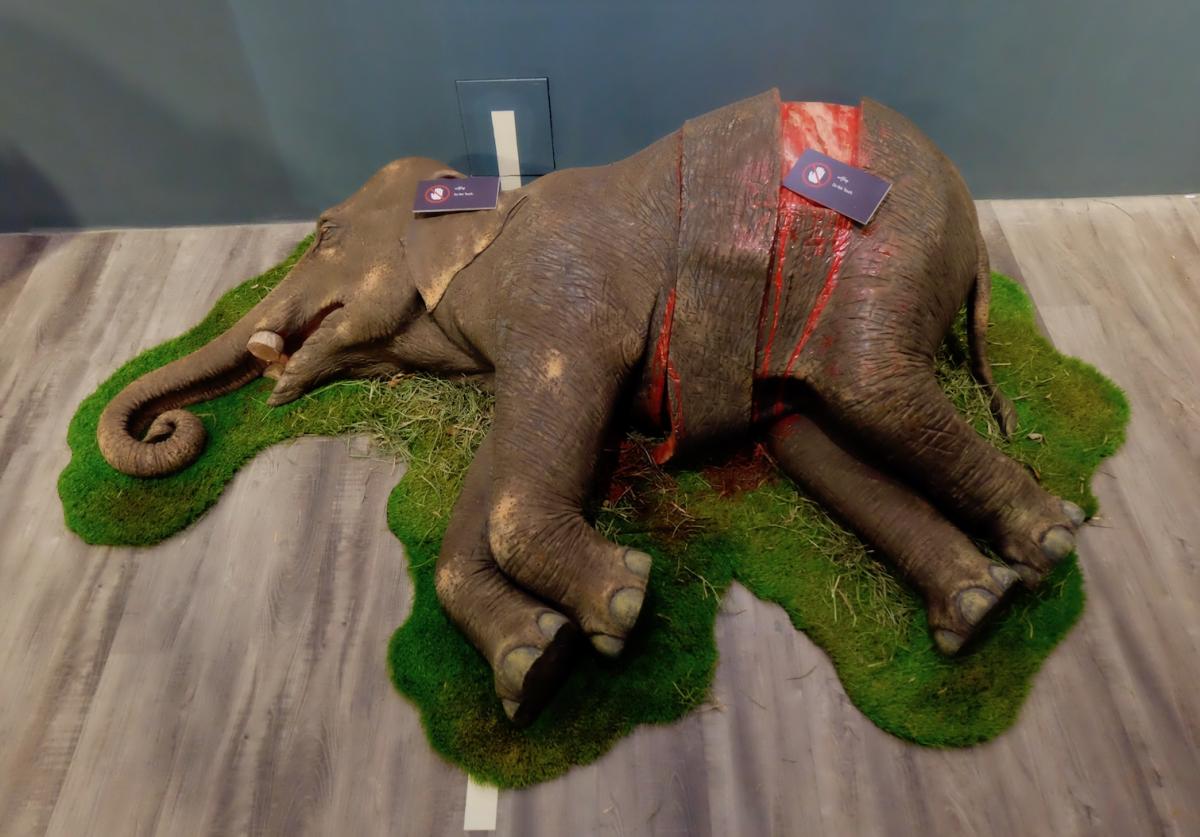
One way to mark the opening of a new museum is to crush more than one million dollars’ worth of confiscated wildlife parts under a steamroller.
Cue the crunch of tiger bones, pangolin scales, turtle shells, ivory and dried trunks outside the back of the Elephant Museum—a room which occupies the ground floor of Yangon’s National History Museum.
Visitors first learn from population maps that Myanmar has a large share of Asia’s Asiatic elephants. But the number of wild elephants in the country has dropped about 80 percent to a roughly 2,000 in the last 80 years.
One of the causes is poaching which is why the new exhibition has a salient anti-wildlife trafficking message, packaged with some curious objects and information placed around an elephant skeleton.
Compare the pad prints of a baby and a young elephant to a human footprint near the entrance of the well-lit room. Then trace the evolution of the species back from African and Asian elephants to their stubby-tusked ancestor, the palaeomastodon.
In between is the stegodon, whose fossils have been unearthed in Myanmar and are on displayed beneath the evolution panel.
Next are delicately carved ivory pipes, knife sheaths and ornaments, although no background details are offered in their display.
All African elephants have tusks whereas only some Asiatic males have tusks, making this sex the original target for poachers in Myanmar. However, now females are also being hunted for their hides, which are used for cosmetics, traditional medicine, and souvenirs. Much of this ends up for sale in the notorious illegal wildlife market of Mong-la on the Myanmar-China border. A map above the ivory carvings shows ivory trafficking routes from 2000-2016 although Myanmar is conspicuously excluded from the illicit operation.
Nearby text naming Myanmar as a major source for tusks makes this omission even more confusing. But there is a model of a dead baby elephant that has been partially skinned on the floor to take your mind off such matters.
Perhaps to level things out, the wall finishes with a collage of newspaper cuttings vaunting poacher arrests, as well as some model tusk parts to feel.
Filling the rest of the room are displays of contraptions used by mahouts and videos of conservation efforts. Back near the entrance is grainy footage showing the dramatic capture of a wild elephant and a pair of tusks.
These are said to belong to a sacred white elephant caught under the reign of King Bodawpaya in the early 1800s. The accompanying story makes some bold claims about the pachyderm, which was breastfed by palace women and ate from golden bowls. Legend has it that the elephant could predict bad weather and pushed for peace between the king and his siblings.
Elephants have played a significant part in Myanmar’s mythology, history and economy, and the Elephant Museum is an engaging platform to highlight the threats they face today.
Based on the same complex as Yangon Zoological Garden, visitors may be more saddened to see the nearby elephant enclosure and its chained captives.
The museum, on the corner of Bo Min Kaung and Upper Pansodan roads, opens daily from 8am-5pm and is free for the first three months.


